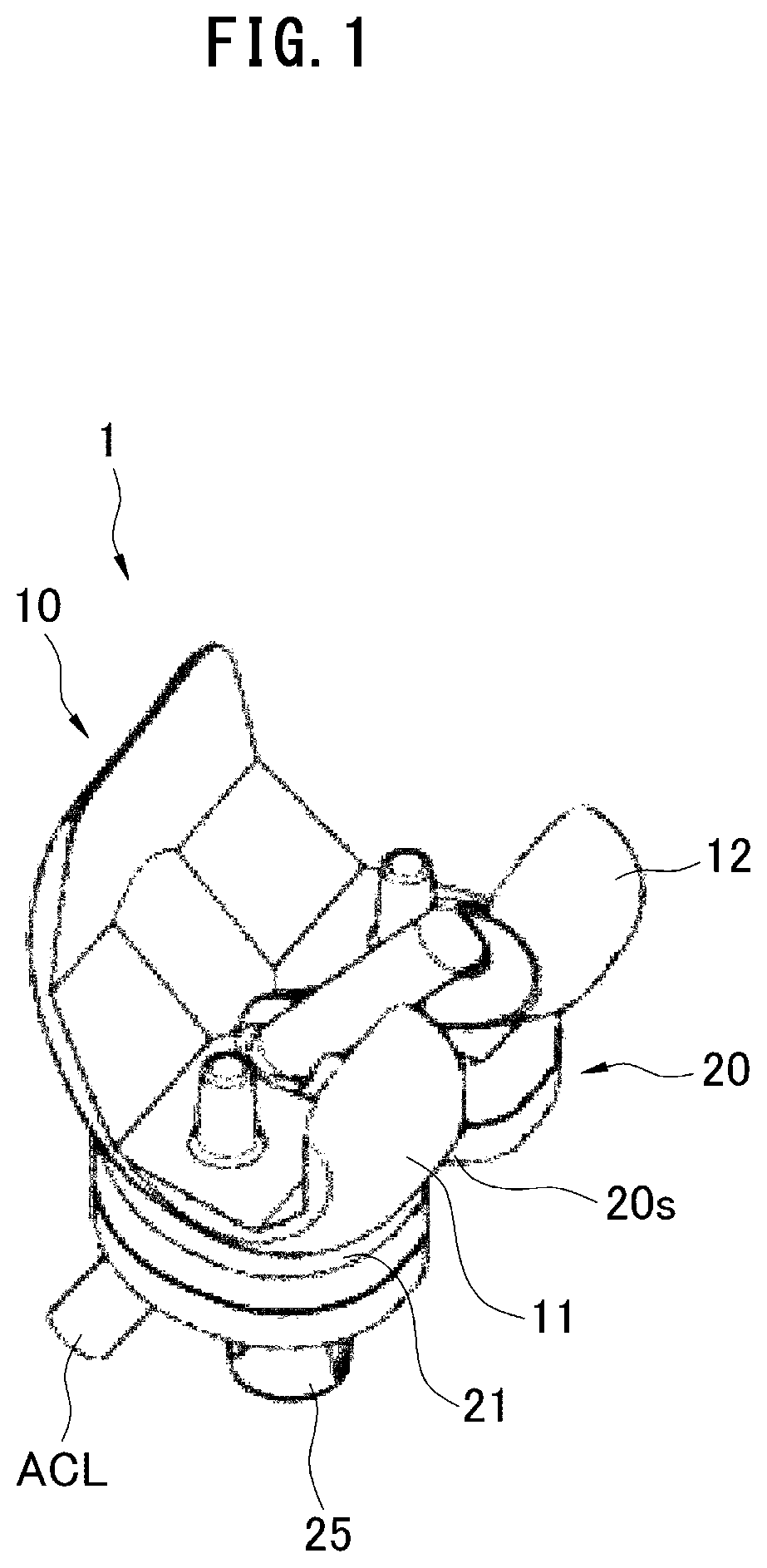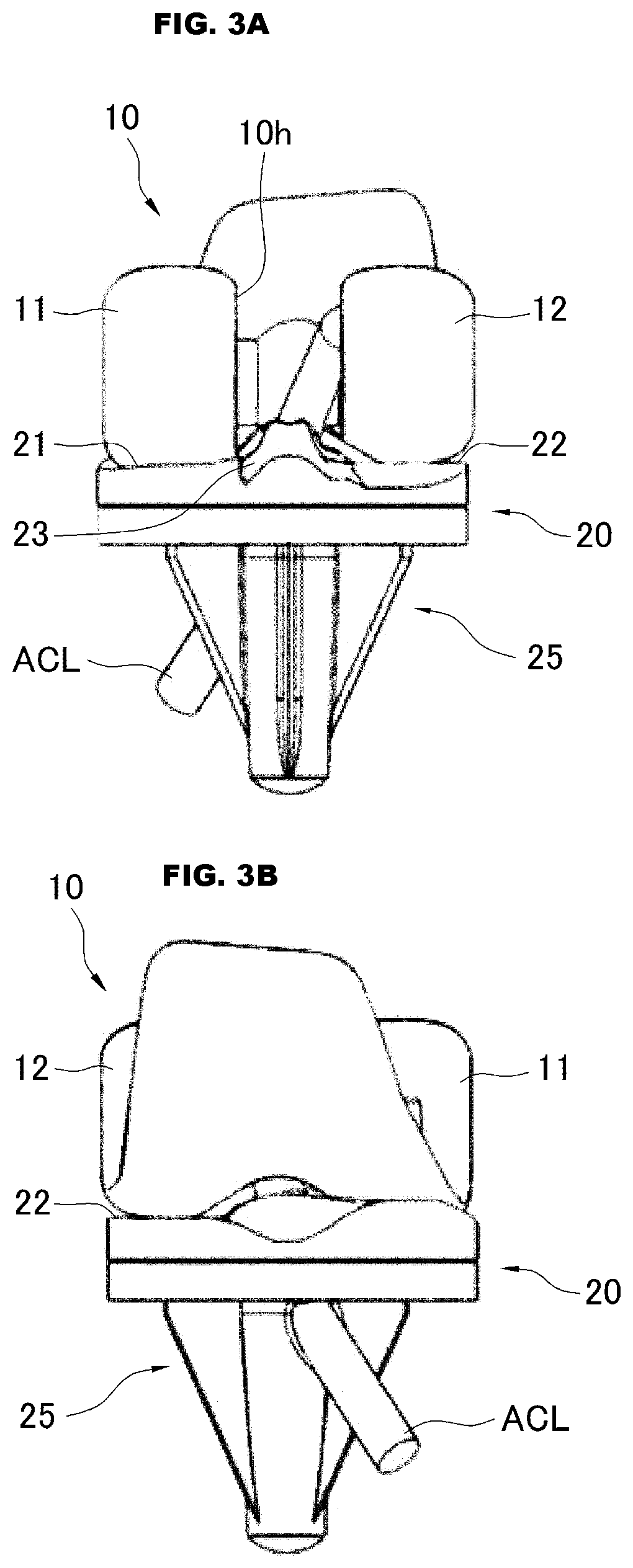Artificial knee joint
a knee joint and artificial technology, applied in knee joints, prostheses, medical science, etc., can solve the problems of femur and tibia dislocation, possible deformation of knee joints, poor pain, etc., to prevent femur and tibia, reduce edge loading, and reduce the effect of large load
- Summary
- Abstract
- Description
- Claims
- Application Information
AI Technical Summary
Benefits of technology
Problems solved by technology
Method used
Image
Examples
Embodiment Construction
[0074]An artificial knee joint of the present invention is used in a total knee replacement in the treatment of the knee osteoarthritis, the joint rheumatism, or the like, and has a feature of a structure in which the anterior cruciate ligament can be reconstructed.
[0075]As used herein, the reconstruction of the anterior cruciate ligament means that the ligament constituting the anterior cruciate ligament is joined so as to be directly connected to not the artificial knee joint, but the femur and the tibia. That is, one of ends of the ligament constituting the anterior cruciate ligament is directly joined to the femur while the other end is directly joined to the tibia.
[0076]In the description, the ligament used to reconstruct the anterior cruciate ligament includes both the artificial ligament artificially formed with polyester and the like as a row material and an organism tendon (organism ligament) collected from another region of an organism. Hereinafter, the ligament including ...
PUM
 Login to View More
Login to View More Abstract
Description
Claims
Application Information
 Login to View More
Login to View More - R&D
- Intellectual Property
- Life Sciences
- Materials
- Tech Scout
- Unparalleled Data Quality
- Higher Quality Content
- 60% Fewer Hallucinations
Browse by: Latest US Patents, China's latest patents, Technical Efficacy Thesaurus, Application Domain, Technology Topic, Popular Technical Reports.
© 2025 PatSnap. All rights reserved.Legal|Privacy policy|Modern Slavery Act Transparency Statement|Sitemap|About US| Contact US: help@patsnap.com



